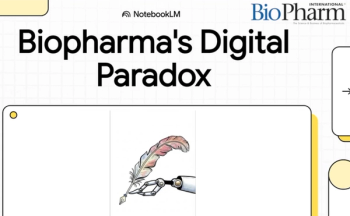
- BioPharm International-03-01-2021
- Volume 34
- Issue 3
Auditing for Good Distribution Practices
Auditing distribution suppliers provides understanding and documentation of the services performed.
Q: We have updated our vendor audit program for 2021, and the list includes several companies that perform transport and warehousing services for us. This is a new area for us, and given the continued travel restrictions, we are not certain how best to audit these companies. Can you give us some direction?
A: Good distribution practices (GDPs) are required by regulators in most regions. The United States is different from all other agencies as there are no separate GDP regulations in place. FDA covers violations of storage and distribution under good manufacturing practice (GMP) violations (1). The European Union has codified GDP in two directives (i.e., community law, which has been transposed into member states law) (2–4). In China, GDP is the law, they call it Good Supply Practice (5–6).
Service providers for the storage and transport of goods will have to comply with different regulations, based on their location and the specific type of services they provide. Generally, these companies will have to comply with GDPs. This means that it is essential to have a clear and unambiguous understanding and documentation of the precise nature of the services.
Let us look at an example for illustration: company A (headquartered in Germany) performs the road transport of drug substance and drug product from your warehouse in Switzerland to company A’s warehouse in Germany, where the goods are relabeled, picked, and packed for distribution to wholesalers in the European Union. Based on these activities, which include wholesaler activities, such as importation, storage, and transport, company A must hold a respective licence from the German authorities.
If you cannot audit on site, you have the possibility to perform a virtual audit via videoconference instead. Irrespective of the mode of audit, preparation is essential. This includes a detailed audit agenda, which in this case may look something like this:
- Opening Meeting
- Facility and Site Overview
- Virtual Facility Walkthrough
- Documentation Review
- Quality system and management review
- Personnel qualification and training program
- Self-inspection management
- Deviation management
- Change control
- Customer management
- Subcontractor management including quality agreements
- Inventory management control system
- Recall management
- Complaints management
- Returns management
- Shipping route validation, including security and risk management
- Cold chain and ambient temperature shipping management processes, including vehicle qualification.
The three items in bold letters are those you may wish to focus on particularly, because the vast majority of service providers subcontract all transport. Subcontractors merely performing transport may not even have to comply with the GDP regulations by law. They may not even have a quality system, yet they are transporting your goods. You really want to make sure that company A, with which you have your contract, has a good system of subcontractor oversight. Such oversight may have to include training of the transport company’s staff in aspects of security and documentation (particularly with regards to temperature records).
In fact, the best way to understand who performs what activity in a supply chain is to follow it step by step. Request supporting documented evidence for each step. This way you will be able to fully understand who is involved, which procedures govern these activities, and how these are documented.
The previous example may not necessarily apply to your situation, but the principles are the same for any other supply chain scenario. Yes, the applicable GDP regulations differ from one jurisdiction to another and from one country to the next. One goal, however, is common to all, namely the protection of the patient from products that are adulterated, be it from inappropriate storage or transport conditions, or from falsified products entering the supply chain. Your audits need to evaluate if your service providers have everything necessary in place to assure that goal. Their licences will support that assertion but it will be your audit that proves it.
References
1. 21 Code of Federal Regulations 210, 211.
2. European Commission, Guidelines of 5 November 2013 on Good Distribution Practice of Medicinal Products for Human Use (Text with EEA relevance) (2013/C 343/01)
3. European Commission, Guidelines of 19 March 2015 on Principles of Good Distribution Practice of Active Substances for Medicinal Products for Human Use (Text with EEA relevance) (2015/C 95/01).
4. European Commission,
5. CFDA, Good Supply Practice for Pharmaceutical Products (China Food and Drug Administration Decree No. 13) Issued on July 1, 2015.
6. CFDA, Announcement on the Revision of 5 Appendixes to Drug Good Supply Practice (GSP) Dec. 29, 2016.
About the Author
Siegfried Schmitt is vice president, Technical at PAREXEL.
Article Details
BioPharm International
Vol. 34, No. 3
March 2021
Pages: 50, 49
Citation
When referring to this article, please cite it as S. Schmitt, "Auditing for Good Distribution Practices," Pharmaceutical Technology 34 (3) 2021.
Articles in this issue
over 4 years ago
Genetic Vaccine Platforms Demonstrate Their Potentialover 4 years ago
Biosimilars Hit Their Strideover 4 years ago
Jumping Seed Train Intensification Hurdles to Maximize Yieldover 4 years ago
Finding Success in AAV Manufacturingover 4 years ago
Toxicology: Ensuring Drugs are Safe for Peopleover 4 years ago
FDA Documents Achievements and Plans for Futureover 4 years ago
Fighting Through This Slow Season of ChangeNewsletter
Stay at the forefront of biopharmaceutical innovation—subscribe to BioPharm International for expert insights on drug development, manufacturing, compliance, and more.





